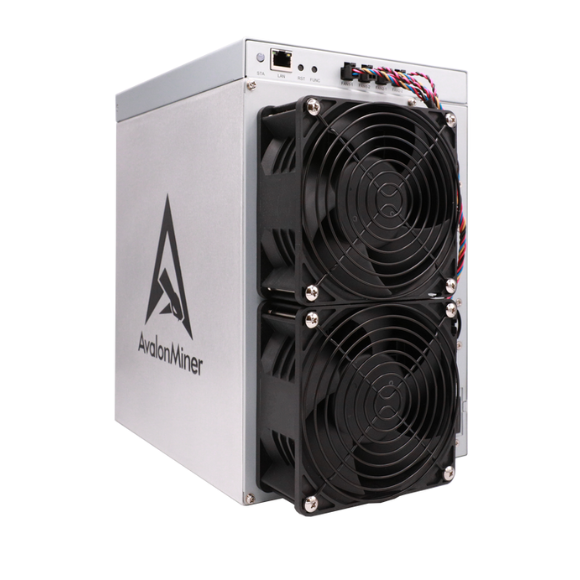Comprehensive Avalon Miner A1566-185T Repair Parts and Replacement Guide: Maximizing Mining Performance and Longevity
In the rapidly evolving world of cryptocurrency mining, equipment maintenance represents a critical factor in sustained operational success. The Avalon Miner A1566-185T stands as a pinnacle of engineering precision, demanding a strategic approach to parts replacement and system optimization. This comprehensive guide will provide an in-depth exploration of repair strategies, component management, and performance preservation techniques.
Understanding the A1566-185T Ecosystem
The Avalon Miner A1566-185T is not merely a mining device; it’s a sophisticated technological ecosystem designed for professional-grade cryptocurrency mining operations. With its impressive 185 TH/s hashrate and exceptional 18.5 J/TH efficiency, this mining system represents a significant investment that requires meticulous maintenance.
Critical Component Analysis and Replacement Strategies
1. Core Hash Board Maintenance
The hash boards constitute the primary performance engine of the A1566-185T. Systematic evaluation and strategic replacement are crucial for maintaining optimal mining efficiency.
Key Replacement Considerations:
– Visual inspection for physical damage
– Thermal imaging to detect potential hotspots
– Resistance measurement of critical circuitry
– Chip-level performance diagnostics
Recommended Replacement Intervals:
– Standard operational environment: Every 12-18 months
– High-stress/extreme temperature conditions: Every 9-12 months
2. Fan Assembly Replacement Protocol
The dual 12050 FANs represent a critical thermal management component. Proactive replacement prevents potential thermal throttling and performance degradation.
Replacement Indicators:
– Abnormal noise levels
– Inconsistent rotational speeds
– Reduced airflow performance
– Visible wear or mechanical stress
Recommended Maintenance Cycle:
– Standard environment: Annual replacement
– High-dust/challenging environments: Semi-annual inspection and potential replacement
3. Power Supply Unit (PSU) Management
The PSU represents a mission-critical component requiring precise monitoring and strategic replacement planning.
Diagnostic Evaluation Metrics:
– Output voltage stability
– Current efficiency
– Temperature performance
– Load distribution characteristics
Recommended Replacement Triggers:
– Voltage fluctuations beyond ±3%
– Efficiency drop greater than 5%
– Evidence of thermal stress
– Operational history exceeding 24 months
4. Thermal Interface Material (TIM) Optimization
Often overlooked, thermal interface material plays a crucial role in heat dissipation and overall system performance.
Replacement Strategy:
– Inspect annually for material degradation
– Replace when thermal conductivity reduces by 10-15%
– Use high-grade semiconductor-grade thermal compounds
5. Connection Interface and Socket Maintenance
Electrical connections represent potential failure points requiring systematic evaluation.
Maintenance Protocols:
– Quarterly visual and thermal inspections
– Cleaning of contact surfaces
– Verification of connection integrity
– Replacement of oxidized or compromised interfaces
Advanced Diagnostic Techniques
1. Thermal Imaging Analysis
Utilize professional-grade thermal cameras to conduct non-invasive performance assessments. Look for:
– Uneven heat distribution
– Potential hotspots
– Thermal gradient anomalies
2. Electrical Performance Monitoring
Implement comprehensive electrical performance tracking:
– Real-time voltage monitoring
– Current efficiency measurements
– Power consumption analysis
3. Hash Rate Stability Tracking
Develop a systematic approach to monitoring hash rate consistency:
– Daily performance logging
– Deviation percentage calculations
– Comparative analysis against baseline metrics
Strategic Replacement Part Sourcing
Recommended Procurement Channels:
– Authorized Avalon distributor networks
– Certified third-party component suppliers
– Manufacturer-approved repair centers
Cost-Effectiveness Considerations:
– Compare genuine vs. aftermarket parts
– Evaluate warranty implications
– Consider long-term performance metrics
Economic Optimization Strategies
1. Predictive Maintenance Model
Implement a data-driven maintenance approach:
– Create comprehensive performance logs
– Develop statistical failure prediction models
– Establish proactive replacement schedules
2. Total Cost of Ownership (TCO) Analysis
Calculate maintenance expenses against potential mining revenue:
– Component replacement costs
– Potential downtime expenses
– Performance degradation impact
Professional Implementation Recommendations
1. Documentation and Tracking
Maintain meticulous maintenance records:
– Replacement date
– Component specifications
– Performance metrics
– Observed variations
2. Training and Skill Development
Invest in specialized training for:
– Advanced diagnostic techniques
– Component-level troubleshooting
– Performance optimization strategies
Conclusion: Precision Maintenance as a Competitive Advantage
The Avalon Miner A1566-185T represents more than hardware—it’s a strategic asset demanding sophisticated management. By implementing comprehensive maintenance protocols, miners can significantly extend equipment lifecycle, optimize performance, and maximize return on investment.
The future of cryptocurrency mining belongs to those who understand that preventative maintenance is not an expense, but a critical investment in sustained operational excellence.
|
Please feel free to contact me to assist you in resolving your issues: E-mail: Minerfixessales@gmail.com WhatsApp/WeChat:+86 15928044684
The services we offer include:
a.New and Used Miners b.Miner Accessories c.Miner Repair Courses d.Global Repair Stations e.Overclocking and Underclocking Services |

|